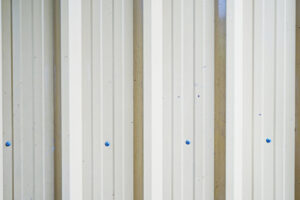When it comes to vinyl siding temperature installation, there are some key considerations to keep in mind. Vinyl siding is a popular choice for many homeowners due to its durability, versatility, and low maintenance requirements. However, it is important to consider the temperature during the installation process to ensure that the siding is properly fitted and performs optimally over time. In this blog post, we’ll discuss what you need to know about vinyl siding temperature installation.
The importance of temperature during installation
Vinyl siding is a popular choice for many homeowners because of its durability, versatility, and low maintenance requirements. However, it’s essential to take into consideration the temperature during the installation process. This is because temperature fluctuations can affect how the vinyl siding performs over time.

Temperature variations
During cold temperatures, the vinyl siding can become brittle and more difficult to install. In hot temperatures, vinyl siding can become softer, which can make it more vulnerable to buckling and warping. Additionally, some adhesives used for vinyl siding installation can become difficult to work with in extreme temperatures. Therefore, it’s important to be aware of the temperature when planning your installation.
Rule of thumb
It’s generally recommended that vinyl siding be installed between 40 and 90 degrees Fahrenheit. It’s best to install the siding on days with moderate temperatures. If you need to install on a day with extreme temperatures, it’s best to wait until the end of the day or early evening when the temperature begins to drop. This will help ensure that your vinyl siding will be properly installed and perform optimally over time.
How to prepare for vinyl siding temperature installation
Before beginning the installation of vinyl siding, it’s important to ensure the environment is suitable for installation. The temperature needs to be between 40-90 degrees Fahrenheit to ensure that the siding will adhere properly to the substrate. If the temperature is too cold or hot, it could cause the siding to warp or not adhere properly, leading to costly and time-consuming repairs in the future.

Clear the area
It’s also essential to make sure the area is clear of debris and objects that could damage the siding during installation. Make sure any loose objects are cleared away, and that any nearby trees or bushes are trimmed back so they won’t interfere with the installation process.
Foundation type
Another important factor to consider is the type of foundation used for the structure. If a wood foundation is used, it should be treated with an appropriate sealant before vinyl siding temperature installation. This will help prevent moisture from penetrating the wood and causing damage to the structure.
Tools and supplies
Finally, make sure you have all the necessary tools and supplies on hand before beginning the installation process. This includes a ladder, hammer, nails, caulk, and a level to ensure the siding is installed correctly. With the right preparation, you can ensure your vinyl siding will perform optimally for many years to come.
The best time of year to install vinyl siding

When considering the best time to install vinyl siding, you should take into account both temperature and weather conditions. Vinyl siding should be installed in temperatures between 40 and 90 degrees Fahrenheit. This ensures that the siding can properly adhere to the home and is less likely to warp or buckle due to extreme heat.
Best time to install
In terms of weather conditions, it’s best to install vinyl siding on a clear day with no rain in the forecast. Rain can make installation more difficult, while high humidity can create condensation that can damage the siding. If possible, try to schedule your vinyl siding installation during the spring or fall, when temperatures are moderate and precipitation is less likely.
Warning
It’s also important to note that vinyl siding can become brittle in cold temperatures, so avoid installing it in the winter months if possible.
By following these tips, you can ensure that your vinyl siding installation is completed successfully and lasts for years to come.
How to troubleshoot vinyl siding installation problems

When installing vinyl siding, it is important to take steps to avoid common problems. If you experience issues during the installation process, it is essential to troubleshoot them as soon as possible.
The most common problems when installing vinyl siding are sagging, buckling, and cracking. If any of these issues arise during your installation, you can take steps to rectify them.
Sagging
The most common cause of sagging vinyl siding is improper fastening. Make sure that all nails and screws used to secure the siding are driven in straight and are installed at least 1/4” away from the edges.
Buckling
Buckling is often caused by thermal expansion and contraction of the siding. To avoid this problem, make sure to leave adequate spacing between pieces of siding when installing.
Cracking
Cracking is usually caused by dirt or dust on the surface of the vinyl siding that gets trapped underneath the siding panels. To prevent this issue, thoroughly clean the surface before installation.
If you have any questions or concerns regarding vinyl siding installation, consult with a professional to ensure the best results. Taking the necessary steps during installation can save you time and money in the long run.







